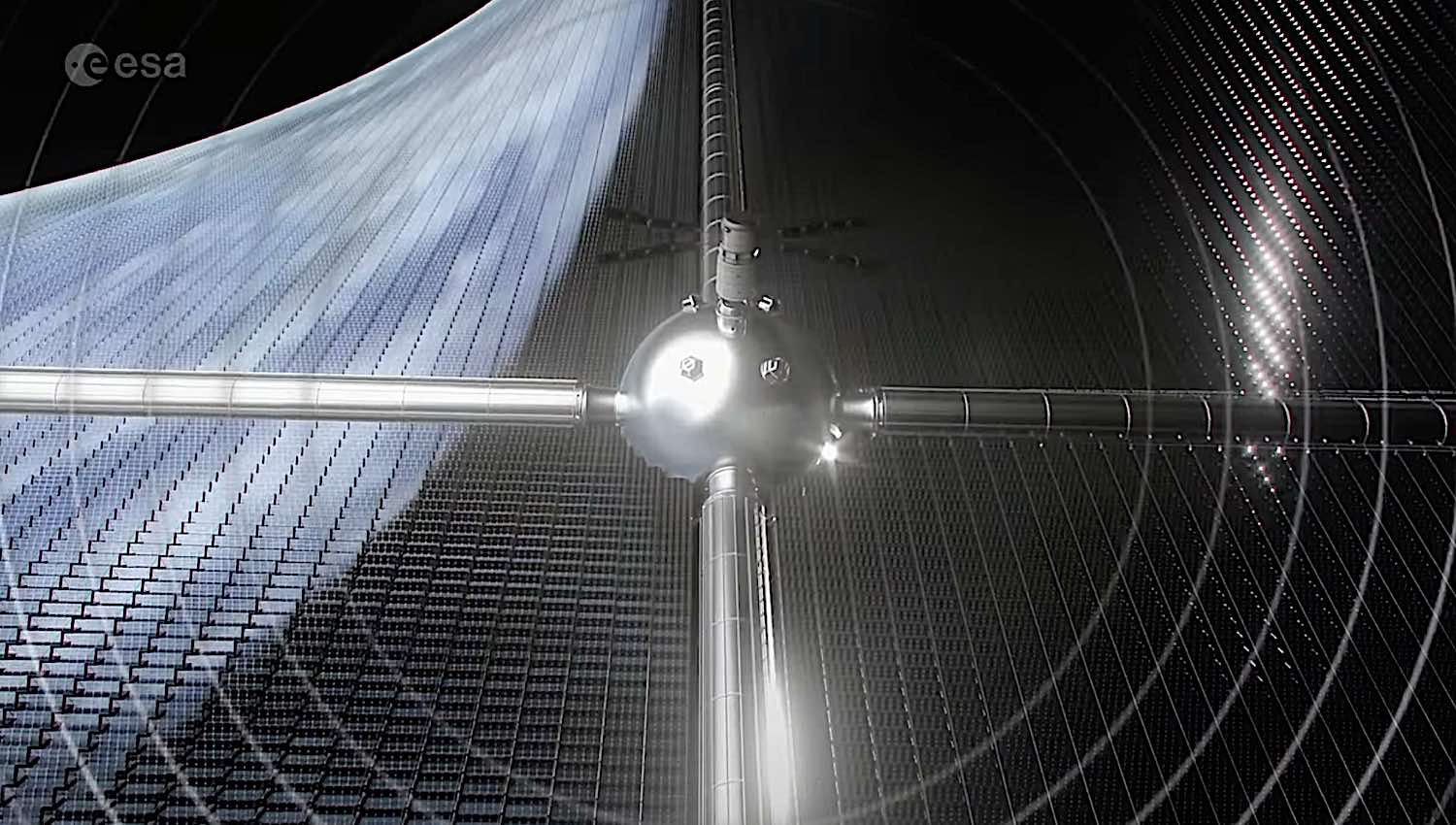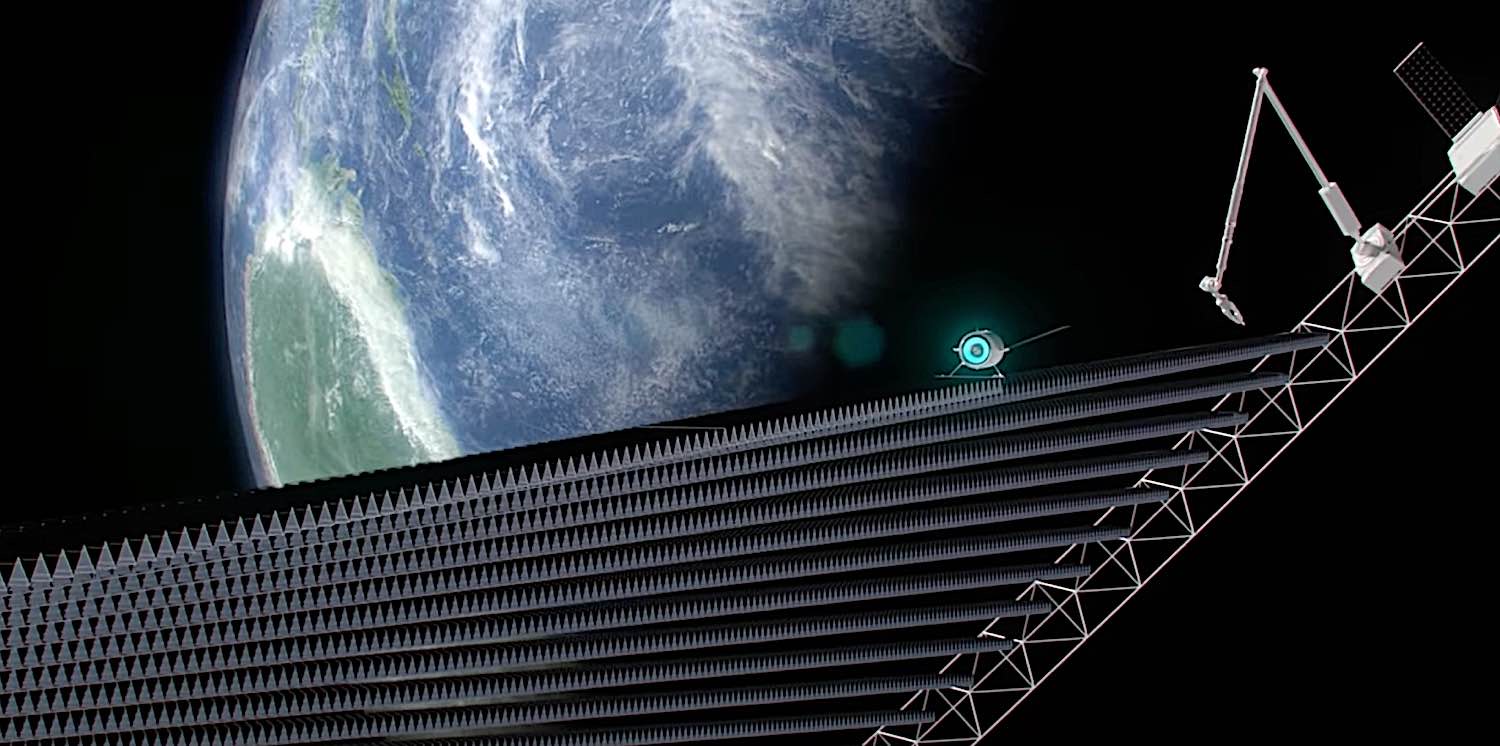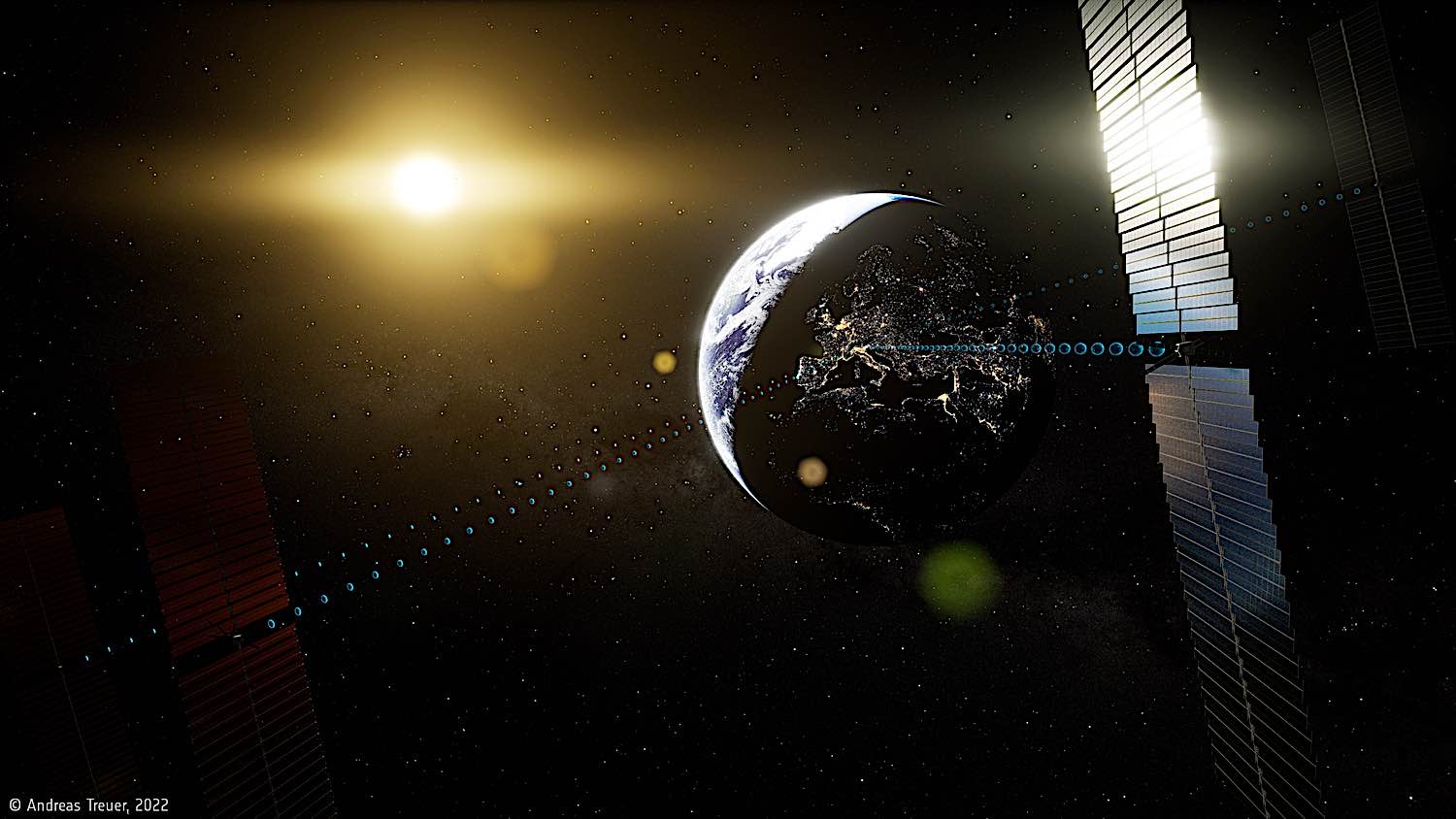As the world rushes to adopt renewable energy production practices, the European Space Agency (ESA) is looking to the stars for possible solutions to the global energy crisis. Solar power is not a new idea, but the notion of harvesting solar energy from space is an innovative and exciting concept. The problem is that to realize this vision, advancements in both satellite technology and solar harvesting are required. Nevertheless, that’s exactly what the ESA’s SOLARIS project aims to achieve [1].
Countries across the globe are implementing initiatives and incentives aimed at reducing carbon emissions while at the same time investing in renewable energy sources such as wind, solar, and geothermal power production [2]. The greatest source of energy in our solar system is the sun, so it makes sense to begin harvesting its solar emissions in a more efficient and effective way. The issue is that in order to harvest the sun’s solar power from space, in any meaningful way, the satellites involved will need to be miles long, and so will the receiving stations on Earth [3].

That said, the technology required to achieve this sort of mass solar harvesting is already in development. If realized, this could make a significant impact in the battle against carbon emissions, and gradually reduce the global dependence on fossil fuel energy sources, such as oil and gas. If successful, the project could revolutionize the global energy sector, and usher in a new age of clean, renewable energy, with near-zero carbon emissions. But there are still some challenges ahead.
The SOLARIS Project is Ambitious but Attainable
The basic idea behind the SOLARIS project sounds like something out of a science-fiction novel. In short, the idea is to put massive solar arrays in orbit that can harvest the sun’s emissions 24/7. As this large volume of solar energy is collected it can then be “beamed” down to earth as a microwave transmission, effectively supplying the European power grid with enough energy to eventually power the continent [4].
Although the idea may seem futuristic, both satellite technology and solar array innovations have made this seemingly fantastic idea a real possibility. However, there is still much work to be done before the SOLARIS Project can become a reality. For starters, we don’t presently have the technology required to manufacture or robotically assemble solar arrays on this scale. We will also need to make significant advances in the area of high-efficiency photo-voltaic energy.
However, the best and brightest at the ESA are actively working on these initiatives and expect to have the groundwork completed for the SOLARIS Project at some point in 2025. This would mean that the project would be put to a decision at that point in terms of full-fledged funding and development. If approved, preliminary production would likely start almost immediately.

The ESA recently announced a new research initiative aimed at tackling the challenges involved with bringing SOLARIS to life [5]. This should accelerate the development of the technologies required for SOLARIS and hopefully result in approval. Of course, the green light will depend on how far the underlying technologies advance over the course of the next few years.
[ EMBED SOLARIS YOUTUBE VIDEO HERE: SOLARIS: Preparing for space-based solar power – YouTube ]
Europe isn’t the only player in the race for space-based solar farms. The United States [6], China [7], and the United Kingdom [8] are also actively researching the viability of putting solar farms into orbit. The major challenges remain the scale of the satellites required, the amount of photo-voltaic energy that needs to be collected and subsequently transmitted, and of course, the investment required for research, development, and deployment.

That said, the European Space Agency’s commitment to the SOLARIS project serves as inspiration for the rest of the world. If we are ever going to break our dependence on fossil fuels then large investments need to be made, and space-based solar power is the most promising alternative energy source, certainly, it has the potential to provide more power than offshore wind or geothermal production plants.
The Environmental Impact of Having Solar Farms in Space Would be Staggering
Solar panels produce very little in the way of CO2 emissions. The reason for this is simple: solar panels create electricity from sunlight, which is a completely clean and renewable source of energy. However, in order to produce electricity, solar panels must be manufactured. This process uses a significant amount of energy, which often leads people to believe that solar panels are not carbon neutral.
In reality, the amount of energy required to produce a single solar panel is a very small percentage of the electricity that the panel will produce over its lifetime. In fact, the amount of energy required to make a solar panel is roughly equivalent to the CO2 that one person would emit in about five weeks [9]. As such, the CO2 emissions related to solar panel manufacturing are negligible [10].
Now, to create solar arrays miles long is a different story. However, solar panels produce clean energy that doesn’t result in any additional CO2 emissions over their lifetime. This means that solar power is a completely carbon-neutral energy source [11], and when you consider the impact of having a continent powered by clean energy, it’s safe to say that the net positive impact of leveraging space-based solar farms would be a dramatic reduction in carbon emissions, which is indeed the goal.
That’s not to say that space-based solar farming is necessarily good for people or animals. More research is needed to determine the impact of low-power microwave transmissions on the sort of scale we’re talking about with a project like SOLARIS. Specifically, it’s unknown how these energy transmissions might affect the people and wildlife living near a receiving station. But to date, there hasn’t been any evidence that this is cause for concern.
It remains to be seen if the SOLARIS project will be approved in 2025, but even if it takes a bit longer, the promise of renewable, clean energy is on the horizon and it’s something we should all be excited about. We need to reduce our dependence on oil and gas, and orbiting solar farms, may one day play a key role in solving that challenge.
SOURCES:
[1] ESA – SOLARIS
[2] Global Renewables Outlook: Energy transformation 2050 (irena.org)
[4] SOLARIS: Preparing for space-based solar power – YouTube
[5] ESA – Plan to research solar power from space
[6] Space-based solar power getting key test aboard US military’s mysterious space plane | Space
[7] China’s solar power space project spotlights need to reimagine our energy systems (unep.org)
[8] A solar power plant in space? The UK wants to build one by 2035. | Space
[9] Release of carbon dioxide by individual humans | GLOBE Scientists’ Blog
[10] Environmental Impacts of Solar Power | Union of Concerned Scientists (ucsusa.org)
[11] The Solar-Power Industry Is Historically Carbon-Negative – The Atlantic






























